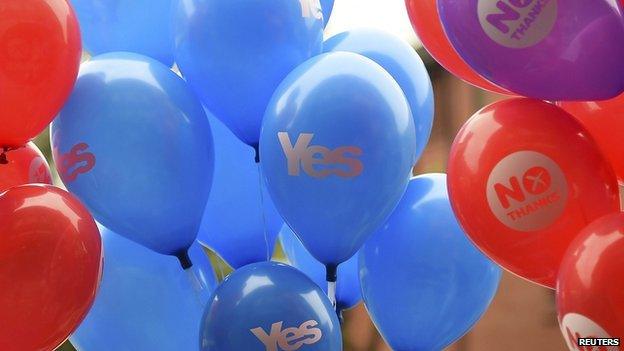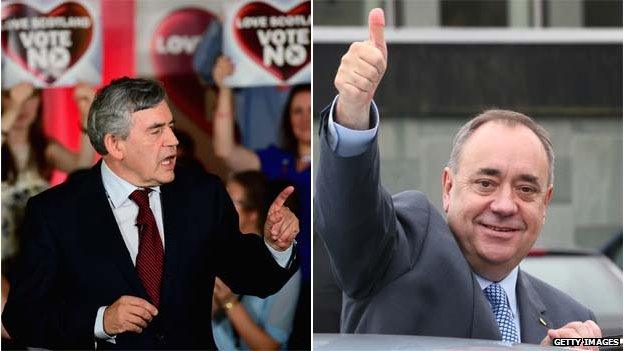Time for the people to speak
- Published

The final day and confidence is the keynote on either side. Certainly, that was so at the two competing rallies I attended in Glasgow.
At the Yes event in the city's Buchanan Street, the talk was of empowering a generation. The talk was of enabling Scotland to build a more prosperous and just society.
At the Better Together event in Maryhill Community Hall, the talk was of the true patriotic option being a No vote, blending more powers with continuity in a reformed UK.
Also in our end is our beginning. Each side seeks to identify and challenge a core weakness in their opponents' pitch.
Yes say that the promise of more powers is illusory, that there is evidence of mounting Tory disquiet with the concept. No say that there are still no clear answers on the currency. Naturally, both claims draw counter-attacks.

This has been an energetic, argumentative, free-flowing debate: in the media, at staged events. But alongside that is another discourse, connected but not coterminous.
Questions, challenges, arguments, answers, emotions and ideas: the lively, engaged collective intellect of the voting public. Voluminous, magnificent, intense, far-reaching.
The existential challenge for the media has been: approach that private discourse, seek to disclose its content and you change its nature. But it is palpably there - and will persist until the last votes have been cast.
It is that discourse - influenced, of course, by other facets in this remarkable democratic exercise - which will determine the outcome.
Soon, now, all passion spent, all arguments deployed, all words despatched. Time for the people to speak through the power of the ballot box, louder than any microphone or megaphone. The rest is silence.